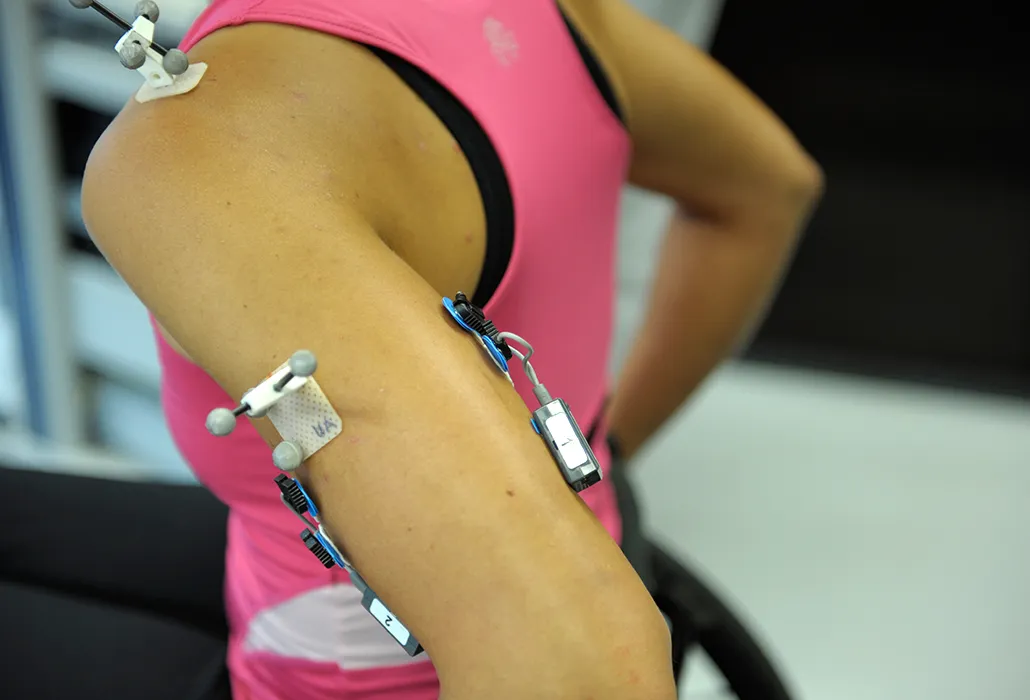Shoulder Health and Mobility
Due to their upper extremity dependency in daily life, the mechanical loading on the shoulder in individuals with spinal cord injury (SCI) is frequent and high. This increases the risk of tissue overload and shoulder complaints, thereby affecting
, participation and quality of life. This is confirmed by results from the .Due to its anatomical structure, the human shoulder enables a large range of motion while joint stability is mainly controlled by muscles, rendering the upper extremity vulnerable to complaints.
In order to diminish the shoulder complaints, we aim our research at:
- studying underlying mechanisms of shoulder load, in our movement laboratory,
- quantifying and relating load, capacity and tissue change,
- development of methods in monitoring shoulder load in daily conditions.
Based on increased insight in the relation of load, capacity and tissue change, injury prevention programs can be optimized, in an open and bilateral discussion with clinical experts.
We currently have a strong national and international collaboration with the Swiss Paraplegic Centre, the Vrije University in Amsterdam, University Medical Center in Groningen and are continuously expanding this collaboration with other research groups, clinical disciplines and the SCI population for their valuable input.
With these combined efforts we work towards a quality management system for upper extremity functioning, aiming at long-term preservation of shoulder health in SCI individuals.
Examples of projects in relation to shoulder health:
- Handcycling versus handrim wheelchair (completed project)
- Muscle fatigue induced by wheelchair propulsion (current project)
- Wearables & big data (future project)

Contact

Dr. Ursina Arnet

Tit. Prof. Dr. Claudio Perret
Research Projects
Werden Sie jetzt Mitglied und erhalten Sie im Ernstfall 250 000 Franken.
Spenden Sie jetzt und unterstützen Sie unsere Projekte zugunsten von Querschnittgelähmten.
